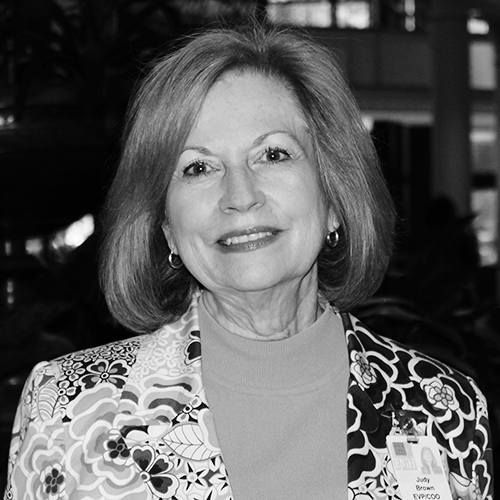In addition to all the shifts happening in today’s high-pressure, technologically evolving, shrinking-budget healthcare environment, political and interpersonal dynamics can further complicate internal operations. At Southcoast Health, CMIO Dr. Michael Hyder and CIO Joan McFaul have developed a complementary, collaborative, and highly productive working relationship that effortlessly conquers this obstacle.
The two met nearly three years ago when McFaul joined Southcoast in the midst of an initiative to consolidate more than thirty different information systems into a single EMR platform. “I remember meeting Joan and hitting it off immediately,” Hyder remembers. “It was a good thing, too, because we were about to go through a major, transformational project. The experience really strengthened our relationship.”
The two soon discovered that they shared multiple sets of complementary skills: mutual commitments to collaboration, objective problem-solving, and a sense of humor toward the challenges they face. “Having a good understanding of each other’s strengths and weaknesses has had a lot to do with our success,” Hyder says.
Hyder and McFaul maintain clear definitions of each of their individual roles (a practicing physician, Hyder is also chief medical officer for Southcoast Physicians Group and medical director for Southcoast Health Plan), as well as how they individually bring value to shared endeavors.
“The dual perspectives give us more objectivity, make us more credible, and help us get much more accomplished than we would if we were working independently.”
The result is a well-balanced blend of technological and clinical expertise that organically churns out practical and creative solutions. Their typical approach is to evaluate situations separately before holistically assessing intended objectives, available resources, and potential strategies together.
“We don’t make isolated, unilateral decisions, but if one of us is unavailable the other can certainly address an issue alone,” McFaul says. “At the same time, we realize that there will probably be less perspective and insight, so we work together as much as possible.”
This practice requires constant communication between the two, which they say goes “back and forth, and up and down, through all levels of staff and management.” Their creative problem-solving and networking throughout the Southcoast organization has rewarded them with “go-to” status as third-party mediators for many internal issues.
“We always seem to have each other’s backs, which has turned out to make us highly productive,” McFaul says. “The dual perspectives give us more objectivity, make us more credible, and help us get much more accomplished than we would if we were working independently. It’s a powerful combination.”
Together, the two complete hundreds of projects of all sizes every year. In fiscal year 2015, this included leveraging available technologies to support and help drive efforts to convert what began as a $30 million operating loss into a $4 million profit.
The dyadic structure between CIO and CMIO helps Southcoast IT operate more efficiently within the matrix that makes up the organization’s transactional ecosystem. Hyder describes it as a dynamic environment where executives and departments share resources and access in the name of productivity.
“Our collaborative, ‘matrixed’ relationships allow our IT services to be more responsive, nimble, and flexible to the evolving needs throughout the entire organization.”
Compared to a traditional hierarchy, Hyder explains, “Our collaborative, ‘matrixed’ relationships allow our IT services to be more responsive, nimble, and flexible to the evolving needs throughout the entire organization. We’re able to make decisions on the fly to reduce duplication and eliminate waste.”
Hyder and McFaul are taking that perspective one step further by establishing a new informatics department within IT services at Southcoast. This team will enable knowledge-sharing opportunities to help develop and drive themselves toward objectives of business, health, and strategy.
One program that will be measured is the performance of the Epic EMR system, which was launched in September 2014 and completed in October 2015. “Implementing a comprehensive system like Epic is a huge challenge, but it’s also an immense opportunity to shape and transform how we do business,” McFaul says.
“Making sure we have reliable business intelligence on how we’re responding to patients and interacting with providers, for example, is critical to enabling that transformation to happen,” she adds.
Operational flexibility, collaboration, and agility extend to how Hyder and McFaul work with outside vendors as well. They cite companies including Epic, Optimum Healthcare IT, and MedStreaming as partners that can provide additional expertise to address budget challenges and find ways to do more with fewer resources.
“We look for relationships with partners that deliver high-value work—not just generic deliverables. They’re able to help develop solutions when we’re faced with unexpected or ongoing challenges,” Hyder says.
The two also stress the importance of their respective teams’ combined achievements. Among both groups, they have cultivated the same spirit of respect and cooperation by valuing input, enabling creativity, and acknowledging contributions to their shared successes.
Even as Southcoast benefits from their synergy, Hyder and McFaul still undertake their own independent work. McFaul is currently spearheading a new enterprise-resource planning system. Hyder initiated an applied-care technology program that integrated tech-savvy clinicians into initiatives to promote new care practices.
It’s their work together, though, that adds value that is greater than the sum of its parts. While they may, in fact, be leading the way for all other CMIOs and CMOs, Hyder contends that it’s simply the “collaborative dyad model” that anyone can use effectively anywhere, regardless of the application.
McFaul, self-described as the more “right-brained” of the two, adds that it’s about “being open to really listen when you communicate, so that you can adapt quickly, maximize your flexibility, and drive change.”
“To the extent you can do that, it bodes well for any system in any industry,” she says. “And it happens to be particularly effective in addressing the issues healthcare is facing right now.”
When asked if there has ever been an instance when the two of them were ever out of sync on an issue, McFaul thinks for a moment before responding, “I can only think of one time when we had a real disagreement over some staff changes.”
“It was a little uncomfortable, but we worked it out over lunch one day.” AHL



